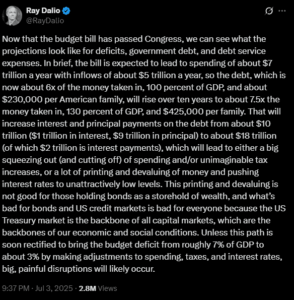
The upcoming June jobs report is poised to play a crucial role in shaping the Federal Reserve’s next move on interest rates. Scheduled for release on Friday, the report is expected to provide key insights into the health of the U.S. labor market amid ongoing economic uncertainties. Analysts and policymakers alike are closely watching the numbers, as they could determine whether the Fed opts for a rate cut in its next meeting.
With inflationary pressures easing and economic growth showing signs of slowing, the Federal Reserve has been under increasing pressure to adjust its monetary policy. The June jobs report will be a critical factor in this decision-making process, offering a snapshot of employment trends, wage growth, and labor force participation that could sway the Fed’s course of action.
What the June Jobs Report Could Reveal
Economists are forecasting a moderate increase in non-farm payrolls, with expectations of around 160,000 new jobs added in June. This figure, while positive, would mark a slowdown from the robust job gains seen earlier in the year. Unemployment rates are anticipated to remain steady at 3.6%, maintaining their historically low levels.
Meanwhile, wage growth will be another critical metric to watch. Average hourly earnings are projected to rise by 0.3% month-over-month, translating to a year-over-year increase of 3.2%. Strong wage growth could signal continued consumer spending power, a key driver of economic activity.
The Federal Reserve’s Dilemma
The Federal Reserve finds itself at a crossroads. On one hand, the central bank is committed to sustaining economic expansion, now in its longest period on record. On the other, it must guard against potential overheating and inflation. The June jobs report will provide essential data to balance these competing priorities.
According to sources within the Fed, a weaker-than-expected jobs report could bolster the case for a rate cut. Such a move would aim to stimulate economic activity by making borrowing cheaper for consumers and businesses. Conversely, a strong report might persuade the Fed to hold rates steady, maintaining its current cautious stance.
Expert Opinions and Market Reactions
Economists are divided on the implications of the June jobs report. Some argue that the Fed should act preemptively to cut rates, citing global economic uncertainties and trade tensions as potential drags on growth. Others caution against hasty decisions, emphasizing the need for a data-driven approach.
“The Fed is in a tough spot,” said Mark Zandi, Chief Economist at Moody’s Analytics. “They need to be nimble and responsive to the data, but not overreact to short-term fluctuations.”
Financial markets have already priced in a potential rate cut, with the futures market indicating a nearly 80% probability of a reduction at the Fed’s next meeting. Investors are keenly aware that the June jobs report could either confirm or challenge these expectations, leading to potential volatility in stock and bond markets.
Historical Context and Future Implications
This development follows a pattern seen during previous economic cycles, where jobs data significantly influenced monetary policy decisions. In the past, the Fed has adjusted rates in response to labor market conditions, aiming to either cool down or stimulate the economy as needed.
Looking ahead, the June jobs report will not only impact the Fed’s immediate decision but also set the tone for future policy considerations. Should the report signal sustained economic strength, the Fed may choose to maintain its current rate levels, focusing instead on other tools to manage economic growth.
However, if signs of weakness emerge, the central bank could embark on a series of rate cuts to support the economy. This proactive approach would aim to extend the current expansion and mitigate risks from external factors, such as trade disputes and geopolitical tensions.
As the release date approaches, all eyes will be on the Bureau of Labor Statistics, whose data will offer a critical lens through which the Federal Reserve and market participants will gauge the next steps in the U.S. economic journey.






